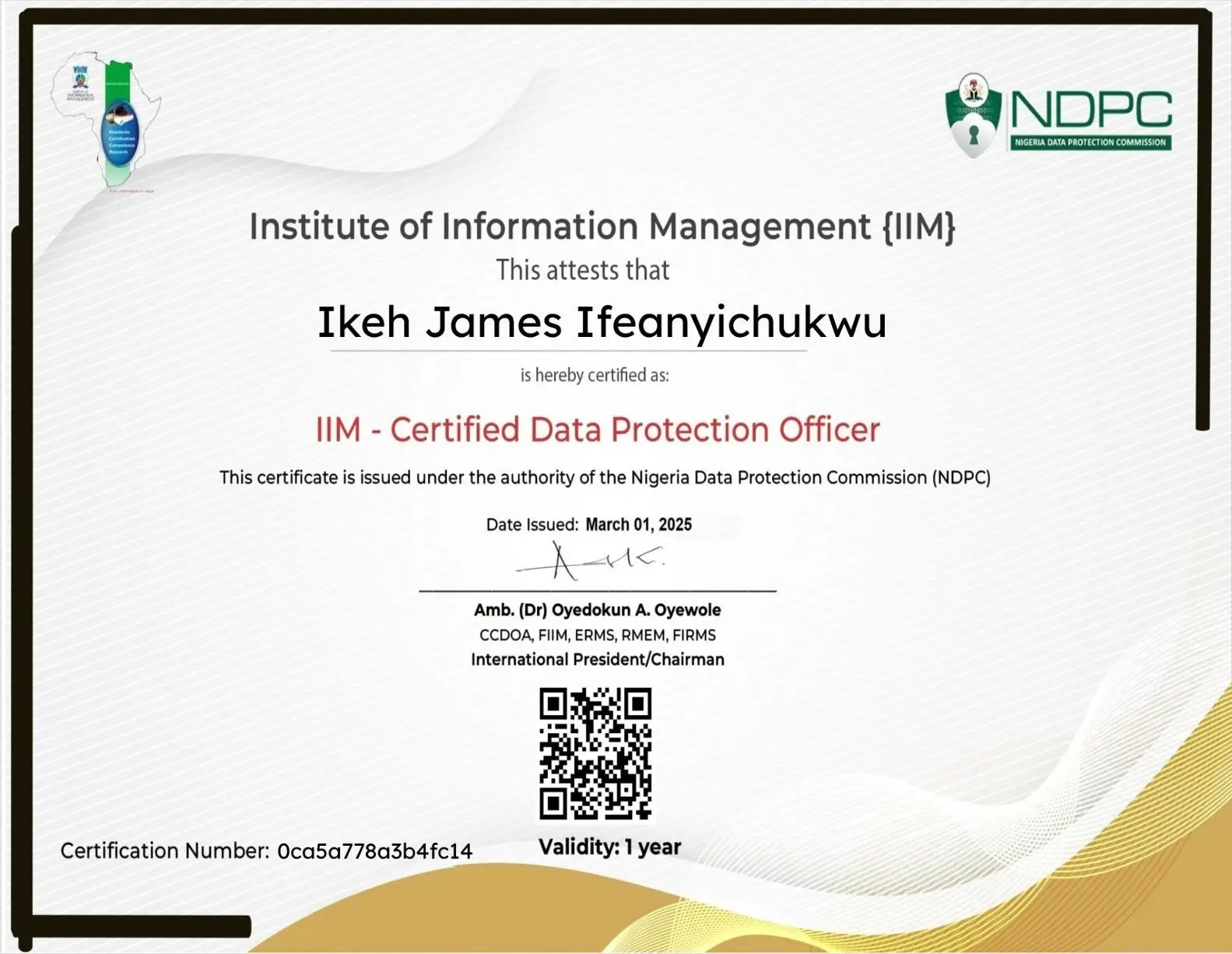Managing Third-Party Data Processors: Compliance Risks and Best Practices
Share

In today’s interconnected digital economy, very few organizations process data alone. From cloud hosting to payroll services and analytics tools, third-party data processors play a critical role in handling personal information.
However, these partnerships also bring serious compliance and cybersecurity risks. Under privacy laws such as the GDPR and Nigeria’s NDPA, your organization remains legally responsible for any data mishandling — even when a vendor is at fault.
This makes third-party data processor management one of the most important pillars of modern data protection governance.
What Is a Third-Party Data Processor?
A data processor is any external entity that processes personal data on behalf of a data controller (your organization).
Common examples include:
- Cloud service providers (AWS, Google Cloud, Azure)
- Payroll companies or HR software vendors
- Marketing automation platforms
- CRM and analytics tools
- Customer support outsourcing partners
- IT maintenance or cybersecurity contractors
In essence, if a vendor touches personal data your company controls, they’re a processor — and you must ensure they’re compliant.
Why Managing Third-Party Processors Matters
| Risk Type | Description | Real-World Impact |
|---|---|---|
| Compliance Risk | Vendor violates data protection laws (GDPR, NDPA, CCPA). | Heavy fines and loss of certification. |
| Security Risk | Processor experiences a data breach. | Customer data exposure and legal liability. |
| Reputational Risk | Public disclosure of vendor negligence. | Loss of trust and media backlash. |
| Operational Risk | Vendor downtime or poor security controls. | Disruption of business operations. |
💡 Remember: Under the GDPR (Article 28) and NDPA (Section 35), the data controller is jointly responsible for any data breach caused by a processor.
Real-World Example
In 2023, a fintech company in Europe faced a €2.5 million GDPR fine after its cloud storage vendor leaked sensitive customer files. Even though the fintech did not directly cause the breach, regulators held it accountable for failing to vet and monitor the third-party processor.
This case underscored a critical truth: You can outsource data processing, but not data accountability.
Best Practices for Managing Third-Party Data Processors
1. Due Diligence Before Engagement
Before onboarding any vendor, conduct thorough data protection due diligence.
- Request privacy policies, compliance certifications (e.g., ISO 27001, SOC 2).
- Review their incident response process.
- Assess technical and organizational safeguards.
2. Sign a Comprehensive Data Processing Agreement (DPA)
A DPA is legally required under GDPR and NDPA. It should clearly outline:
- The scope and duration of processing
- The type of data and purpose of processing
- Confidentiality obligations
- Sub-processor restrictions
- Breach notification timelines
- Deletion/return of data after contract termination
3. Limit Access to Data (Principle of Least Privilege)
Grant vendors access only to the data necessary for their task — no more.
4. Continuous Monitoring and Audits
Don’t assume compliance — verify it.
- Schedule annual audits or compliance reviews.
- Monitor third-party security reports or breach disclosures.
- Track processor performance using vendor management systems (VMS).
5. Incident Response Collaboration
Ensure your incident response plan includes third-party involvement.
If a breach occurs, both you and the processor must coordinate on reporting timelines, investigation, and notification to authorities.
6. Sub-Processor Management
Confirm whether your vendor uses sub-processors. If yes, require transparency and prior approval before any new sub-processor is engaged.
7. Data Transfer Compliance
For cross-border data transfers, ensure processors follow approved mechanisms (e.g., Standard Contractual Clauses, NDPA’s adequacy decision, or local data transfer permits).
Table — Vendor Management Compliance Checklist
| Category | Key Questions to Ask | Compliance Tip |
|---|---|---|
| Legal | Is there a signed DPA in place? | Ensure DPA covers breach notification & sub-processing. |
| Security | Does the vendor use encryption and MFA? | Require documented evidence of security controls. |
| Governance | Who is responsible for data protection at the vendor? | Identify a dedicated DPO or privacy lead. |
| Access Control | How is access to customer data managed? | Enforce least privilege and role-based access. |
| Breach Response | How fast will they report an incident? | Include strict timelines (e.g., within 24 hours). |
| Data Retention | How and when will data be deleted? | Mandate secure deletion after contract end. |
Common Mistakes Organizations Make
- Relying on Vendor Reputation Alone — “They’re a big brand, so they must be compliant.” (False.)
- Failing to Update DPAs after major regulation changes or mergers.
- Ignoring Sub-Processor Chains that create hidden risk layers.
- Not Monitoring Performance post-contract signing.
- Storing Data Indefinitely with processors instead of enforcing deletion.
Case Study: Nigerian Bank & Cloud Processor Compliance
A Nigerian bank recently implemented a third-party processor governance framework in line with NDPA. After discovering that one of its analytics partners stored sensitive data outside Nigeria without consent, the bank:
- Suspended the vendor,
- Reported to NDPC (Nigerian Data Protection Commission),
- Updated its DPA with stronger breach clauses.
Result: The bank avoided regulatory penalties and demonstrated proactive compliance — earning customer trust and regulator commendation.
FAQs
Q1. Who is legally responsible for data breaches — the controller or processor?
Both can be liable, but the controller (your organization) bears primary responsibility for ensuring proper selection and oversight.
Q2. How often should we audit third-party processors?
At least annually, or more frequently for high-risk processors handling sensitive data (financial, health, biometric).
Q3. Are cloud service providers considered processors?
Yes, unless they determine processing purposes (in which case they may be joint controllers).
Q4. What should a DPA include under Nigeria’s NDPA?
At minimum: data purpose, security measures, deletion terms, and notification timelines per Section 35 NDPA.
Q5. What happens if a processor uses unauthorized sub-processors?
That’s a breach of the DPA — you can terminate the contract and must notify the regulator if data is compromised.
Conclusion
Effective third-party data processor management isn’t optional — it’s a compliance and reputational imperative. The right approach blends due diligence, legal safeguards, and continuous monitoring.
By establishing strong DPAs, limiting data exposure, and auditing vendors regularly, organizations can reduce compliance risk and demonstrate accountability — the cornerstone of modern data protection.


























Leave a Reply